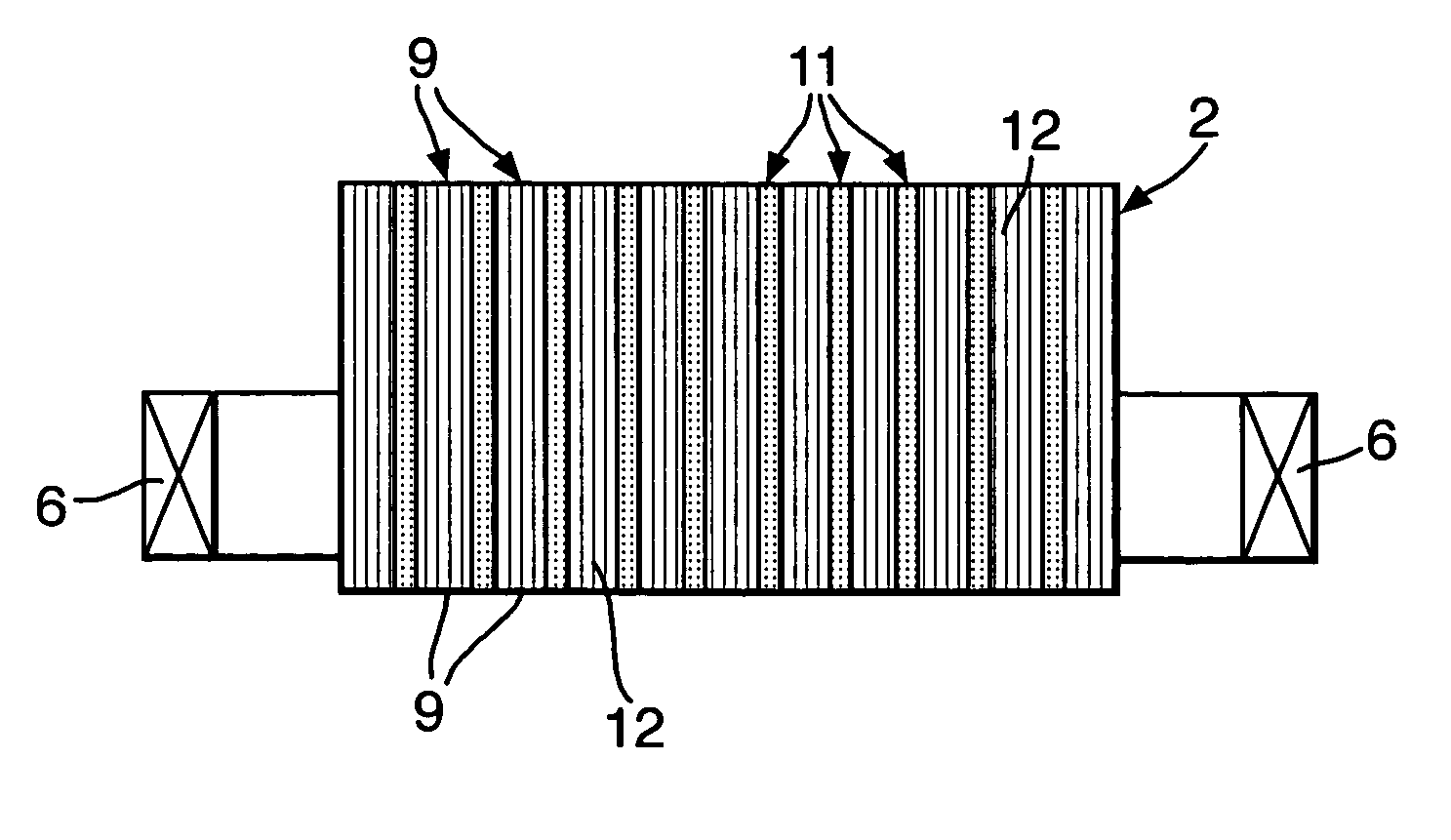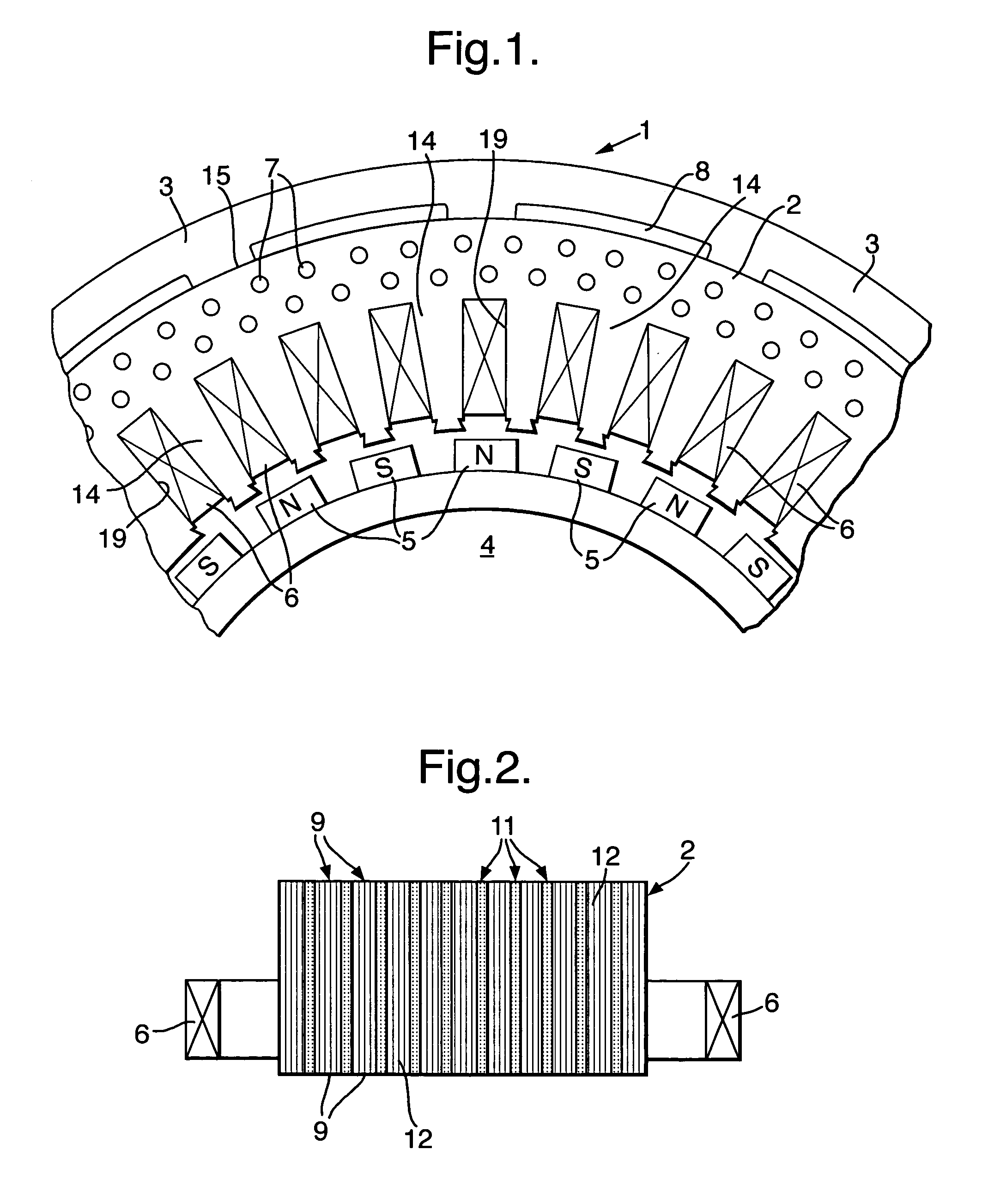Stator core
a technology of stator cores and cores, which is applied in the direction of magnetic circuits characterised by magnetic materials, magnetic circuit shapes/forms/construction, magnetic circuit rotating parts, etc., can solve the problems of low thermal conductivity, inability to cool, and loss of iron, so as to improve conduction transfer and high thermal conductivity , the effect of high thermal conductivity
- Summary
- Abstract
- Description
- Claims
- Application Information
AI Technical Summary
Benefits of technology
Problems solved by technology
Method used
Image
Examples
Embodiment Construction
[0019]As indicated in FIG. 1 the stator core 2 has windings 6 in slots 19 which face inwards towards a rotor 4 which presents permanent magnets 5. Nevertheless, it will be appreciated that a rotor 4 could take the windings for electro-magnetic action and the stator have the permanent magnets or both could be provided with windings for electrical machine operation. The present invention in particular relates to means of improving heat conduction from these windings 6 and more particularly through the core teeth between these windings 6 for greater temperature control. FIG. 2 provides a cross-sectional view through the core 2 in a direction perpendicular to the plane of the drawing in FIG. 1.
[0020]The core 2 is formed as an assembly from a number of laminations 9 of low loss stator iron having high electrical resistivity and a lesser number of laminations 11 of high thermal conductivity material. By implication the high thermal conductivity material will generally not be capable of pr...
PUM
 Login to View More
Login to View More Abstract
Description
Claims
Application Information
 Login to View More
Login to View More - R&D
- Intellectual Property
- Life Sciences
- Materials
- Tech Scout
- Unparalleled Data Quality
- Higher Quality Content
- 60% Fewer Hallucinations
Browse by: Latest US Patents, China's latest patents, Technical Efficacy Thesaurus, Application Domain, Technology Topic, Popular Technical Reports.
© 2025 PatSnap. All rights reserved.Legal|Privacy policy|Modern Slavery Act Transparency Statement|Sitemap|About US| Contact US: help@patsnap.com



